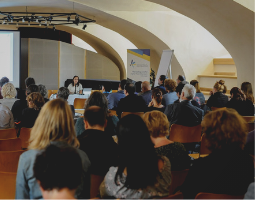Step by Step Mobility Guide
Erasmus + programme Key Action 1 (KA1) learning mobility of individuals refers to a credit mobility between Programme countries (KA103), and International credit mobility between Programme and Partner Countries (KA107)
All agreements and mobility forms: Interinstitutional Agreement (IIA), Learning Agreements for Studies and Traineeships (LA), Staff Mobility Agreement for Teaching (STA) and for training (STT), and Student Application Forms can be signed digitally, circulating papers with original signatures is not compulsory. Scanned copies of signatures or digital signatures may be accepted, depending on the national legislation.
Please note that these instructions are in addition to those given by the EACEA and the guidelines of the National Agencies have to be respected!
General Prerequisites for Mobility Actions
ECHE
For International Credit Mobility between Programme and Partner countries, the Programme country Higher Education Institution needs to be holder of ECHE and apply on behalf of the mobility partners. It is not relevant to Higher Education at the Partner country.
IIA
Inter-institutional agreements (IIA) can be signed between two or more higher education institutions.
PIC
All HE institutions in both Programme and partner countries need to be registered in the Unique Registration Facility (URF).
Mobility Opportunities
Student Mobility
Learn what opportunities Erasmus+ can provide for teaching and non-teaching staff employed in a higher education institution
Staff Mobility
The students must be registered in a higher education institution and enrolled in studies leading to a recognised degree or other recognised tertiary level qualification (up to and including PhD).






